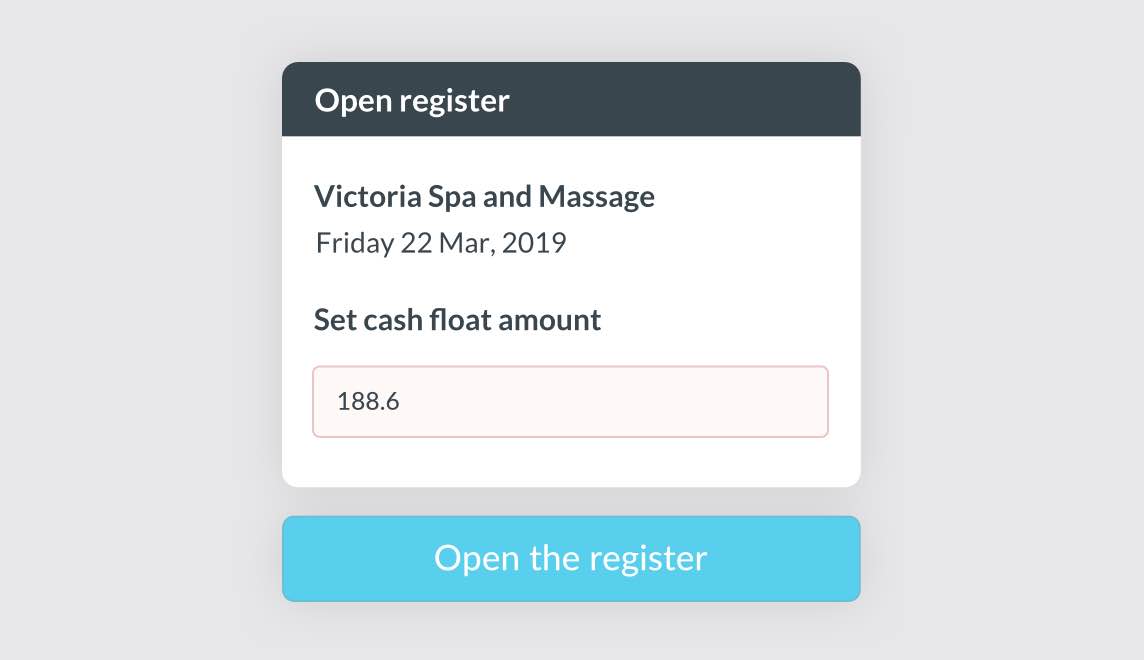Writing a Spa Business Plan
Whether you’re just getting started or you’ve been in business for years, you need a business plan for your spa or salon. A good business plan acts as a guiding document to help you run a successful beauty business, and banks and investors will also require you to have one when applying for funding.
In this guide, you’ll learn how to write each of the four parts of a business plan. Our goal is to give you the information you need to confidently produce a plan that will help you get your spa or salon off the ground — and guide your business to success.
Writing a business plan doesn’t have to be intimidating. In fact, it can be quite fun if you keep this advice in mind:
- Work on your business plan organically, rather than sequentially. That is, if you get stuck in one section, feel free skip around and add things here and there.
- Don’t worry about making your business plan perfect when you’re first getting started. Use it as a place to collect your thoughts. If you need to show it to a bank or investors, you can polish it up then.
- Even though numbers will be hard to come by when you’re first starting out, challenge yourself to get as specific as possible.
- Feeling stuck? Check out some real-life examples of spa and salon business plans from Bplans.com.
Let’s get started!
Executive Summary
The Executive Summary provides an overview of all the other sections in your plan and acts as the elevator pitch to introduce your business and interest the reader. Think of it as a table of contents for your plan’s highlights: it provides a clear, concise overview of what will come in the rest of the plan.
Even though it comes first in your business plan document, it will be much easier to write if you wait until the other sections are finished.
Quick Tips
- Keep it short and hone in on the important details! Summarize the best stuff, the rest will be explained in later sections.
- Tailor it to your audience. Are you writing to secure a traditional bank loan or startup funding, to attract a new partner, or just for yourself? Put yourself in your audience’s shoes and focus on what matters to them.
- Use strong, positive language. Generate excitement and energy by using positive words and active phrasing.
Business Overview
The Business Overview is just what it sounds like: a description of your business, customers, location, unique selling point (USP), and services.
What to include
- Location (pros and cons)
- Business structure and ownership
- Target market and what attracts them
- Services and revenue streams
- What sets your business apart (the USP)
- Mission statement and vision
Have fun with this section, and try to be as thorough as possible. If you’re just getting started, imagine the best version of your business that you can. If you’ve been in business for a while, be honest about how your business actually is doing, and strategize how you’ll meet your vision.
To get started, try imagining you’re a reporter and free-writing this section in the third person. For example:
Modern Oasis is a three-chair salon in the upscale Belmont neighborhood that offers on-trend cuts and color to both men and women, along with selling Best Hair hair care products and accessories.
Market Analysis & Plan
The purpose of the Marketing Analysis & Plan section is to help you and your reader understand the existing market and how you’ll approach it.
This section includes two main parts:
- Market Analysis — your target market and competition
- Positioning & Promotional Strategy — how you’ll set your business apart and market it
Market Analysis: Who are your competitors?
Whether you’re just entering into the market or trying to grow your business, it helps to know who your competitors are.
Step 1: Determine your region
For a spa, salon, or other wellness business, competition tends to be hyperlocal. Your competition will be defined by geography as much as by the services they offer.
Your competition may not be every similar spa or salon within your city limits, however. Poll residents about how far they tend to travel for services. Do they readily trek across town for a haircut? Or will they refuse to consider a new salon if it’s not in their neighborhood?
For a spa, salon, or other wellness business, competition tends to be hyperlocal. Your competition will be defined by geography as much as by the services they offer.
Step 2: Identify your competitors
Compile a list of competitors, and remember — this could include both big chains and small shops.
- Search local review sites like Yelp and Foursquare
- Look for local directories from your town’s business bureau or chamber of commerce
- Search for other online business listings for your area
- Ask your target market where else they shop
Step 3: Scope out your competitors
Once you have a list, it’s time to do some research. Learn what you can about their target markets through customer reviews and online presence — but don’t miss the value you get by visiting in person!
When you visit, pay attention to:
- Layout, décor, and overall feel
- Staff — both staffing logistics and how staff treat customers
- In-store signage and marketing
- Merchandising and other amenities
- Anything else that jumps out — either as off-putting or delightful
Positioning & Promotional Strategy
With this information in hand, you can start to define just how your beauty business will differ from your competition.
Ask yourself:
- What markets do our competitors serve? (And what unique slice of the market will we serve?)
- What experience do our competitors offer? (And how do we offer something unique?)
- What do our competitors do well? (And how will we match or outdo them?)
- What do they do poorly? (And where can we easily outshine them?)
- What services do our competitors have cornered? (And is it worth edging them out, or focusing on something different?)
Outline all the methods you’ll use to promote your spa or salon. This could include:
- Print advertising
- Online advertising
- Radio stations and local television
- Social media
- Email marketing
- Directory sites (Yelp, Foursquare)
- Membership and loyalty programs
Part of your promotional strategy should include how you’ll connect with and keep track of customers. It’s recommended to use business management software. Good software will help you manage your customers with appointment booking and scheduling tools, SMS messaging reminders, client records, and reporting.

Financial Plan
If you’re starting your business from scratch, it will be almost impossible to come up with accurate financial projections. That’s fine! What you’re going for in this section is a financial forecast that will give you a starting point to running a financially sustainable business.
This section includes three main parts:
- Estimates of costs
- Pricing strategy
- Sales forecast & cash flow statement
Each part will inform the other two, so you may find yourself jumping around in order to flesh everything out.
Estimation of Costs
Ongoing business costs at a spa or salon will come in two broad categories: fixed and variable.
- Fixed costs (stay the same each month): Rent, utilities, payroll, emergency savings, taxes
- Variable costs (one-time purchases, irregular purchases): Marketing, supplies, equipment, training, licenses
If you’re just getting started, you’ll also have initial costs associated with getting your business off the ground. Xero has a great (free!) help centre that include guides on creating a budget to help you figure out how much money you’ll need.
Understanding these costs will help you know how much revenue you need each month to stay in business. When you’re just getting started, that number may come out of your savings. In that case, this exercise will help you understand how much of a cushion you need in savings to keep your business running long enough to become profitable.
Pricing Strategy
How much will you charge for services? Write up a menu of services and prices based on factors like the going local rate, time needed, and costs of supplies.
Now estimate how many services you’ll need to perform each week (or retail sales you’ll need to make) in order to run a profitable business. Does that number seem sustainable? If not, adjust your pricing strategy.
You may adjust your prices as you go in order to find a price point that is profitable for you without turning away clients.
Sales Forecast & Cash Flow Statement
Using your estimation of costs and pricing strategy, create a sales forecast and cash flow statement. Remember, this is just an estimate you’ll continue to refine as your business gets off the ground.
The Financial Post lists a number of great templates and tools to help you get started. One useful tool is Poindexter, an app that helps startup businesses estimate cash flow. It has a free-forever version perfect for a single business owner.
Your Business Plan — A Living Document
Once you’re happy with your business plan, don’t just set it a drawer and forget about it. Instead, treat it as a living document that helps guide your business.
Set dates on your calendar to review and revise it quarterly. This helps you stay on track toward meeting your beauty business goals, and also means that if you need a polished business plan to get a bank loan in the future, you’re already up to date.
“Writing a Business Plan for Salons & Spas” is part of Timely’s series of business guides written to help salon and spa owners run their businesses. If you found it helpful, why not share it with a colleague!


